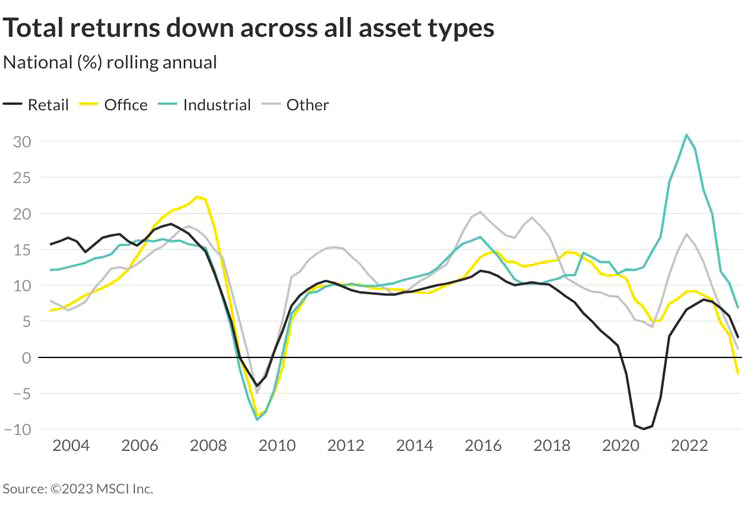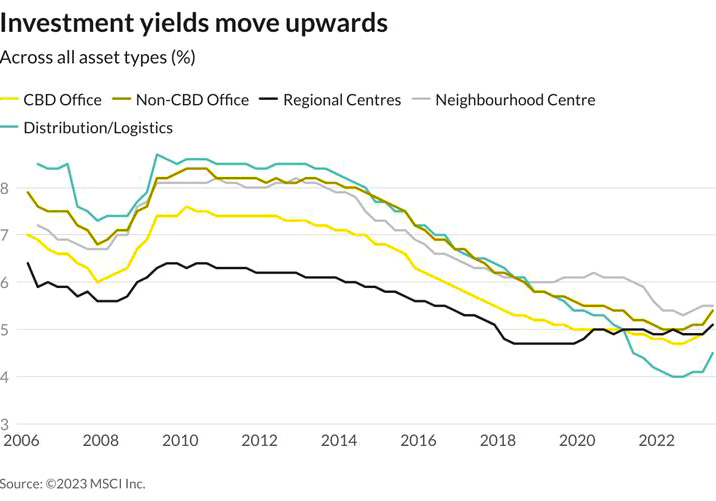Which commercial property class has performed best in 2023?
While retail and office have been the laggards in the commercial property sector, one asset class remains in high demand and is delivering strong investor returns.
Retail and office markets have floundered in the wake of the pandemic for many of the same reasons the industrial property sector remains the most sought-after asset class.
The Covid-era flight from offices to spare bedrooms and dining room tables also saw consumers turn in increasing numbers to online retailing. Neither of these trends has been completely undone, as workers and shoppers alike have become more familiar and satisfied with the new practices.
But the warehouses, the data, distribution and logistics centres, and many of the factories fuelling the online demand have either thrived or at least remained steady throughout the turmoil that best other commercial property types.
Vanessa Rader, Head of Research, Ray White Commercial, said that while for many asset types total returns remain in positive territory, this has been propped up by stability in income return, while capital returns have fallen into negative for all asset types apart from industrial.

Ms Rader highlighted the difference between the plight of office and retail compared to the relatively strong demand for industrial stock and limited supply additions across the country.
“Office has been faced with significant difficulties spurred on by work from home trends born from the pandemic.
“Low unemployment and office supply are adding to the difficulty for this sector, which has been hampered by the high vacancy environment, resulting in strong incentives impacting effective rental rates.”
“Retail as an investment class has been through a prolonged difficult period, with competition from online trading causing issues for brick-and-mortar retail, which has kept returns below other commercial asset types.
“While returns did see some resurgence over the last few years, where sales activity peaked, these have again moved downwards despite the consistency of income return.”
No state has been immune to the changing fortune for retail, with capital returns ranging from -0.7 per cent in Victoria to -6.0 per cent in Western Australia. All segments of retail have been impacted by these capital changes, from larger super and major regional centres (-1.9 per cent) through to neighbourhood (-4.4 per cent), however, income returns remained steady at 5.3 per cent and 5.2 per cent respectively.
Despite the doom and gloom of retail and office markets, Mr Rader said a lack of stock and the stable income streams associated with industrial assets remained attractive to investors.
“Sydney continues to attract the tightest yields at 4.4 per cent followed by Victoria and Queensland at 4.6 per cent and 4.8 per cent respectively.”
Industrial remains investors’ best bet
The industrial property sector is enjoying an extended run of robust demand both for sale and lease. A limited supply of new developments is expected to drive values higher.
Angus Raine, Executive Chairman, Raine & Horne, said industrial property shows no signs of slowing.
“The focus on land earmarked for residential property development is undoubtedly essential to relieve a housing shortfall, however, we are seeing very little in the way of new industrial property in the pipeline.
“This is set to drive vacancy rates even lower – and they are already at near-zero levels in key industrial hubs, including Sydney’s Liverpool and Campbelltown.”
He said it is a similar picture in Southeast Queensland.
“Insufficient land is being made available for development, contributing to a rise in the value of secondary stock, yet Southeast Queensland is expected to continue attracting interstate and overseas migration leading up to the 2032 Olympics, driving further demand and continuing to put upwards pressure on values in the absence of increased supply.”
What next for commercial property?
While past performance is not necessarily an indicator of future returns, it’s hard to overlook the disparity between office and retain, and industrial.
In June 2023, average retail capital return fell into negative territory to -2.7 per cent.
In the office space, CBDs have seen greater change in total returns at -2.3 per cent while non-CBD sits at -1.3 per cent. Some stability in income is keeping these rates elevated while capital losses average -6.5 per cent and -6.1 per cent respectively.
Canberra, Sydney and Perth CBDs recorded some of the poorest results with capital returns recording -11.1 per cent, -7.2 per cent and -6.4 per cent respectively, while in non-CBD markets, Parramatta has been hard hit at -13.2 per cent, according to Ray White Commercial.
“Looking ahead the expectation of further cap rate growth across all asset types is anticipated, regardless of movements to interest rates,” Ms Rader said.
“Investment into commercial property and the risks associated will see buyers more considered over the short term, keeping upward pressure on investment yields.”

Mr Raine said infrastructure continues to be a key driver of demand for commercial property, especially in Sydney’s Western suburbs.
“The construction of the Western Sydney Airport (formally known as Nancy Bird Walton International Airport) is underpinning demand for commercial property across a broad sweep that extends beyond the airport precinct to Penrith, Liverpool and the Macarthur region centred around Campbelltown.”
He added that the commercial market in Perth is also benefitting from the construction of the city’s Metro Net, Bayswater Train Station, and the $232 million extension of the Mitchell Freeway.
He also offered a glimmer of light to the retail and office markets.
“As businesses increasingly return to pre-pandemic conditions, demand for retail and office space is recovering,” Mr Raine said.
“A-grade properties and those with eco-credentials are especially sought after, with older B-grade stock taking longer to lease.”





















